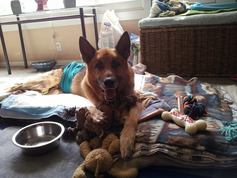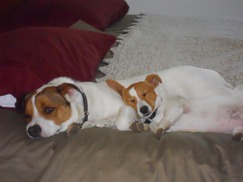One of the most common reasons people take their cats to the veterinarian is because of urinary tract problems. When the bladder is not able to empty correctly, due to infection, bladder stones, blockage of the urethra (urethral plug) or inflammation, your cat can exhibit some or all of these signs.
Symptoms of FLUTD:
Some risk factors can include, diet (eating dry
food),being overweight, stress, genetics, breed, sex (urethral plug can be
deadly to male cats) and age. Feline Lower Urinary Tract Disease (FLUTD) can
develop at any age, but usually occurs at about four years of age. It is
important to see your veterinarian if you suspect a problem, because there
could be an underlining cause. Endocrine diseases, hyperthyroidism, or diabetes
can all cause urinary problems. To determine a diagnosis your veterinarian
will, usually, conduct a physical exam, a urinalysis, urine culture, blood
work, and possibly x-rays and ultrasounds. Some risk factors include, eating
dry food, stress, genetics and even the sex (urethral plug can be deadly to
male cats).
After the tests are conducted and conditioned is
diagnosed, a comprehensive plan can be made to improve your cat’s health.
Holistic Treatments for Cats with FLUTD
Holistic Treatments for Cats with FLUTD
1.) Diet change- Avoid fish, dry
food, and poultry. Fish and poultry are big allergens for cats similar to
gluten and dairy for people. Dry food is hard to digest and cats thrive
on a high moisture diet. If you order supplements at www.AskAriel.com be sure to include
what you are feeding your cat and a diet suggestion will be included on the
packing slip with your order.
2.) Medication-per vet
instructions
3.) Holistic supplements:
NotaSAN and
QuentaSAN- powerful immune support formulas, a must have for pets
with chronic urinary infectionsAkutur- helps reduce inflammation that occurs in the bladder walls after chronic infections, by reducing inflammation, the area is better able to heal once and for all
Pet UTI Prevention – esssential herbs proven to help reduce inflammation, promote healing, displace and kill pathogens from the urinary tact
Power Probiotic for Pets- essential for your pet’s good health because they support digestion, help fight infection and enhance overall immunity
4.) Lifestyle changes -reduction
of stress
5.) Surgery or Urinary
Catheter-to remove the stones or blockage
















